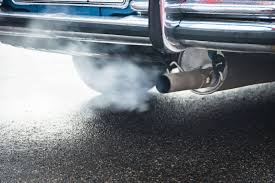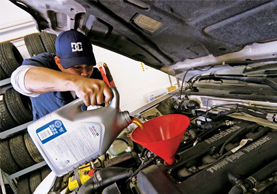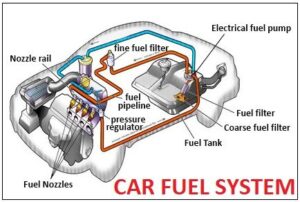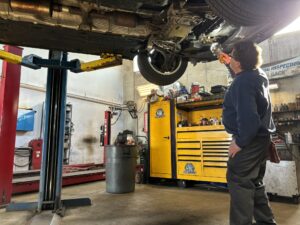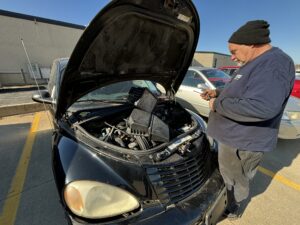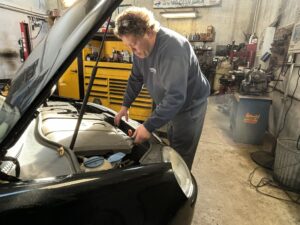For more than 100 years, we have been working to get cars going.
Here we’ll discuss with you what we’ve heard about and how to prevent the most frequent triggers of breakdowns.
- Battery flat or faulty
Battery faults, particularly in the winter, are the most common cause of breakdowns.
You may not be able to start your car if you have an issue with your motor. The starter motor is driven by a car’s batteries, and then the motor spins the alternator, which recharges the battery.
Flat batteries are normally activated while the engine is off by keeping the lights on. But there is still a fair risk that battery concerns will be attributed to several fast trips or a weak electrical link.
Batteries will go flat because of:
Leaving the vehicle for a while unused, or only used for short trips
A defective part
An issue with the charging mechanism of the car
A error in the battery itself
Old era age
Why a flat battery should be stopped
When you leave the vehicle, don’t forget to turn it off. Removing the ignition key does not switch the lights off, but when you unlock the car door, most new cars have a ‘lights on’ alarm tone.
Your battery won’t have a hope of charging if you don’t make long trips too often. Through charging it overnight every 2 weeks or so, you will work this out. We have an easy-to-use battery maintainer that can be bought online.
The garage can ensure that the links are safe and that the battery terminals are clean and corrosion free while the car is serviced.
Often, most automotive batteries have a 3 to 5 year warranty, but after that, you’re working on borrowed time. Before it lets you down, substitute it.
- Keys missing
You’re going to need assistance to get back in whether you loose your key or lock it inside your vehicle. It’s a smart idea to have a spare car key at home, so it’s of no benefit if you’re far gone.
A microchip, intended to avoid your vehicle getting robbed, is most definitely your key, which will make it more complicated to repair if you lose it. That’s why a major trigger of breakdowns is missing or stuck keys.
You would either need to visit an approved dealer or contact someone eligible to assist you with your vehicle.
We have a special Key Assist service that will schedule a new key for virtually every car.
- Damaged Spokes and Tires
Punctures are typically met with a groan, like flat batteries. A sharp object also triggers them, although other explanations include:
The valve of the tyre struggling or being affected (where air is pumped in and let out)
Whether a kerb or a large pothole strikes the tyre,
In a crash, the tyre and rim split.
Old era age (due to worn tire tread, even if still legal)
Check the tyres and rims whenever you encounter a kerb or pothole. If there’s some harm, talk to a professional tire dealer ASAP.
Modifying a flat tyre
It is typically quick to cover a flat tire with a spare tire. Make sure they’re in decent shape and quick to get to if you have a jack or other wheel removing equipment.
It’ll possibly be in the car’s boot if you have a spare tyre (make sure it’s inflated correctly). Learn our step-by-step guide to how a flat tire should be repaired safely.
Instead of a spare, those vehicles come with a post-puncture sealant. The sealant is pumped through the hose, this is meant as a temporary patch only.
How to escape punctures
A few quick tests will help to stop a breakdown:
Regularly monitor your tire tread depth and strength – including your spare wheel.
Your wheels might be misaligned if you spot irregular tire wear. To search, get a tire center or shed.
Change the tire pressure to cope if you’re traveling with large loads (you’ll find this knowledge in your manual).
Stop driving over potholes or through puddles that can cover a pothole or broken surface of the ground.
- AdBlue ads
Selective catalyst reduction (SCR) is utilized for most new diesel engines, and decreases the exhaust’s toxic nitrogen oxide (NOx) pollution. An additive that deals with this is AdBlue. It is also referred to as urea or Diesel Exhaust Fluid (DEF), and to function correctly, it has to be held topped up.
Where the filler is and how many to use, the handbook will inform you. Plus, on the dashboard, there is a mileage timer monitor that will alert you how far you will travel on what is left. If it runs out, the engine won’t function, so it’s crucial to keep it on top.
How to prevent conflicts with AdBlue
Regularly top up your AdBlue amounts.
In order to ensure sure it doesn’t run out, keep an eye on the mileage countdown.
When refilling, take note not to mix up the AdBlue tank and diesel tank.
- Filter of Diesel Particulate (DPF)
In diesel powered cars, this is part of the exhaust system. It traps and burns fine soot particles into less-harmful gases (a process called regeneration).
The Diesel Particular Filter can look after itself, but if you make loads of quick trips, it can get plugged up.
How to stop a clogged DPF
It can save it from stopping a weekly run up the motorway.
A alarm light can come on the dashboard if it gets overwhelmed.
If the indicator light is on, you may need to travel for a reasonable amount of time at motorway speeds to clear it.
The automobile handbook shall include full directions.
- Gas turbine
Your engine could be harmed by using the wrong amount of engine oil – and getting too much oil is almost as dangerous as getting low oil.
If you drive a diesel with a DPF, if the DPF regeneration does not happen, the oil can get diluted. This will trigger major engine harm and your workshop would need an oil change.
How to prevent a problem with engine oil
Test the fuel oil using the dipstick daily.
Between the two lines, the level should be.
The volume of oil is normally 1 litre between the dipstick’s bottom and top line.
The right oil specification will be given in your vehicle handbook.
- Faults alternator
You may have a fault with your alternator if you find frequent battery trouble and dim headlights while your motor is idling. Phone us on 0800 77 66 55, or, as soon as you can, send your garage a ring.
If the ignition alert light turns on and the temperature of the engine increases dramatically, it may have damaged the belt that powers the alternator and water pump.
Stop instantly and send us a phone call on 0800 77 66 55. Do not fire your engine again.
- Engine starter
While starter engines are normally tough and durable, they inevitably malfunction.
As long as you have your vehicle serviced periodically, until they give you any concerns, any possible defects can be picked up.
- Problems with petrol
Incorrect petrol
Are you putting the wrong fuel in the engine? Per year, it happens to about 133,000 drivers.
If you bring petrol into diesel or vice versa, don’t start your car. Only drive your car to a secure spot off the forecourt and call our Fuel Aid team.
How to keep the incorrect fuel from being used
It’s an easy error to make, but before you pull the lever, double-check the pump nozzle:
Green for oil
For diesel black
Often, the fuel nozzle is bigger, so mis-filling a gas vehicle may be more complicated.
Fuel Runs Dry
Another fuel issue drivers call us out about is running out – and always the one they are most ashamed about! It may be possible to overestimate how much fuel is already left in the tank when the needle goes red (or bleeps).
How to stop needing to run short of petrol
It is better not to focus on the monitor of your vehicle, which displays how many miles are remaining before the tank is zero. It isn’t always precise.
If it’s poor in your tank:
Sooner rather than later, top it out,
Max up the day ahead of a long ride
Of course, if you require a couple litres to get going again, our breakdown mechanics are still on-hand to give you a top up.
Fuel-flooded engine
Your engine could be filled with gas if it’s cold and you stop your car too soon after it begins. Luckily, replacing a submerged gas engine is normally easy.
How to prevent the engine from flooding
If you’re driving a gas vehicle, allow the engine time to warm up until the cold begins. It takes only a couple of minutes. The engine tone adjusts when it’s warm enough and the idle speed decreases marginally.
Oh. 10. Overheat
A top cause of breakdowns could be overheating. There may be an issue with the engine or with the cooling device if the temperature warning light is on.
If your engine has steam rising from it or the temperature warning light is on, pull over and call us at the closest safe place.
How to escape overheating
Making sure you monitor the coolant periodically and top it up. At the same time, you can also search your car’s cooling fan.
If you find the coolant amount has fallen, search for leaks. Modern cooling systems also shouldn’t need to top up between facilities, so it’s better to get a garage to try it out.

